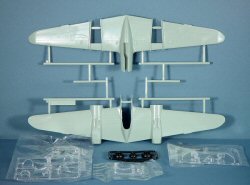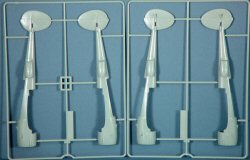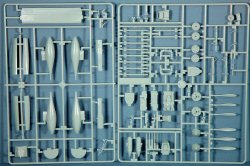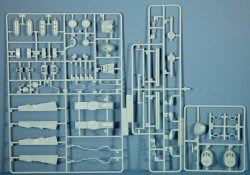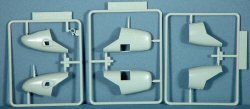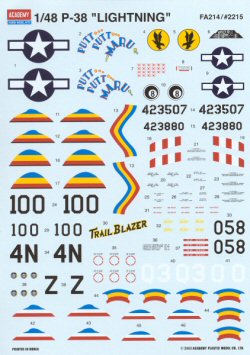Academy 1/48 Lockheed P-38 Lightning | 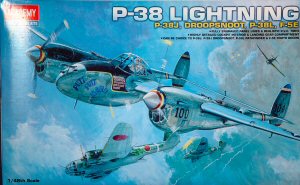 | History The P-38 began development in 1939 with the XP-38. Lockheed set out to develop a long-range fighter that had significant speed and altitude advantages. Able to exceed 400 MPH in level flight, the P-38 was the first production aircraft to be designed with a tricycle landing gear (no tailwheel). In operations, the Germans nicknamed the P-38 "the Fork-tailed Devil" after they first encountered the Lightning over North Africa. The P-38 was also responsible for the downing of Admiral Yamamoto's aircraft in a flight that included Charles Lindbergh who happened to be in the area teaching pilots to manage their fuel mixtures to extend their range. The P-38 had another interesting distinction - pilots were mysteriously losing control of their aircraft in combat. Due to the P-38's speed and clean lines, it was easy for the Lightning to quickly accelerate in a dive into the realm of compressibility - to the edge of the sound barrier. Once the problem was identified, production aircraft were fitted with dive flaps under the wings and aircraft in the field were similarly refitted. The Kit This Academy kit may look familiar to you and for good reason. This is a re-release of their Lightning series that was on the shelves several years ago and then went out of production. Unlike the previous releases however, Academy has included the parts for the P-38J/L, the Droopsnoot P-38J, the Pathfinder P-38L, and the F-5E Photo Lightning in the same box. Molded in light grey styrene, the Academy kit features nicely scribed details and a variety of details from which to equip your Lightning. As I built this kit years ago, I recall that this kit benefits from dry-fitting subassemblies and making a few adjustments to get a good mechanical fit. Overall the fit of this kit is superior to the Hasegawa P-38, which has some frustrating problems with the booms. One thing to keep in mind when building this kit is the volume of plastic aft of the main landing gear. Without a significant amount of ballast, this model will be a firm tail-sitter. The real aircraft had two Allison engines as well as a gun nose loaded with ammunition to act as ballast, but you'll have to settle for lead weight. According to the instructions, you'll need 20 grams in the nose to achieve balance. I would leave the nose and engine caps off the model until all of the main assemblies are together and add weight until you have a solid forward center of gravity. As with the Hasegawa P-38 cockpit, the Academy cockpit is a little on the Spartan side so one thing to consider is replacing the cockpit with the True Details resin P-38 cockpit, and grab their P-38 wheels as well - the True Details wheels have a nice tread pattern and are 'weighted' (flatter on the bottom). In addition to the variety of noses that you can choose from, the kit also features a nice array of underwing ordnance including the 5-rocket launcher, the bazooka rocket launcher, two external fuel tanks and two bombs. Markings are provided for four aircraft: -
P-38J 'Putt Putt Maru' as flown by Col Charles MacDonald, 475 FG CO. -
P-38J Droopsnoot 'Trailblazer', 423507, 4N-Z -
P-38L Pathfinder, 423880, Q3-O -
F-5E '058' Conclusions It is great to see this kit available again on store shelves and nicer still that Academy has rolled up the parts for a number of versions in the same kit. This kit is recommended! My sincere thanks to MRC for this review sample! | 









|

